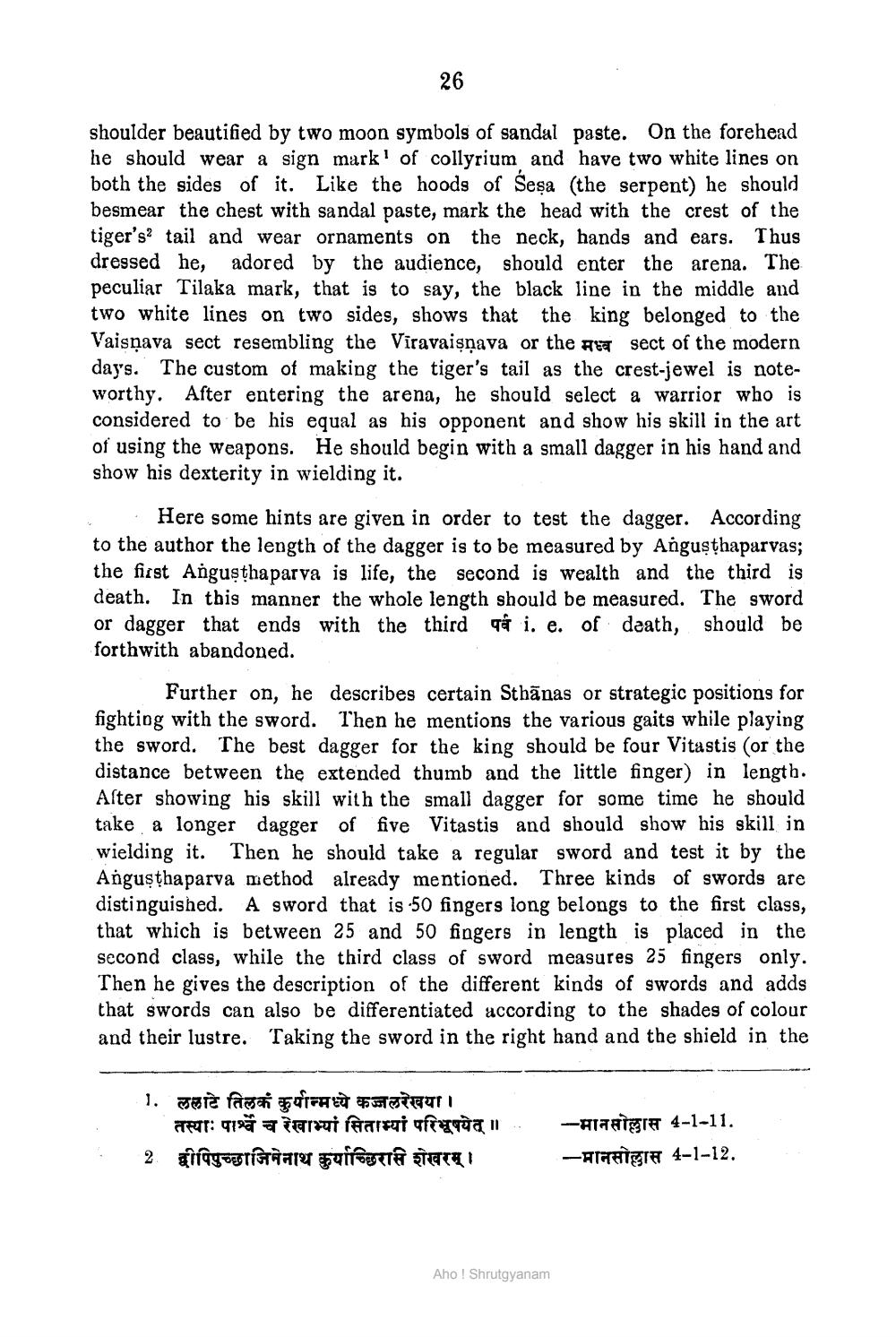________________
26
shoulder beautified by two moon symbols of sandal paste. On the forehead he should wear a sign mark' of collyrium and have two white lines on both the sides of it. Like the hoods of Sesa (the serpent) he should besmear the chest with sandal paste, mark the head with the crest of the tiger's tail and wear ornaments on the neck, hands and ears. Thus dressed he, adored by the audience, should enter the arena. The peculiar Tilaka mark, that is to say, the black line in the middle and two white lines on two sides, shows that the king belonged to the Vaisnava sect resembling the Viravaiṣṇava or the sect of the modern days. The custom of making the tiger's tail as the crest-jewel is noteworthy. After entering the arena, he should select a warrior who is considered to be his equal as his opponent and show his skill in the art of using the weapons. He should begin with a small dagger in his hand and show his dexterity in wielding it.
Here some hints are given in order to test the dagger. According to the author the length of the dagger is to be measured by Angusthaparvas; the first Angusthaparva is life, the second is wealth and the third is death. In this manner the whole length should be measured. The sword or dagger that ends with the third q i. e. of death, should be forthwith abandoned.
Further on, he describes certain Sthānas or strategic positions for fighting with the sword. Then he mentions the various gaits while playing the sword. The best dagger for the king should be four Vitastis (or the distance between the extended thumb and the little finger) in length. After showing his skill with the small dagger for some time he should take a longer dagger of five Vitastis and should show his skill in wielding it. Then he should take a regular sword and test it by the Angusthaparva method already mentioned. Three kinds of swords are distinguished. A sword that is 50 fingers long belongs to the first class, that which is between 25 and 50 fingers in length is placed in the second class, while the third class of sword measures 25 fingers only. Then he gives the description of the different kinds of swords and adds that swords can also be differentiated according to the shades of colour and their lustre. Taking the sword in the right hand and the shield in the
1. ललाटे तिलकं कुर्यान्मध्ये कज्जलरेखया । aur: qâ a fanai fĦarsai qfegqòa 11 2 द्वीपिपुच्छाजिनेनाथ कुर्याच्छिरा से शेखरम् ।
Aho! Shrutgyanam
- मानसोल्लास 4-1-11.
- मानसोल्लास 4-1-12.




